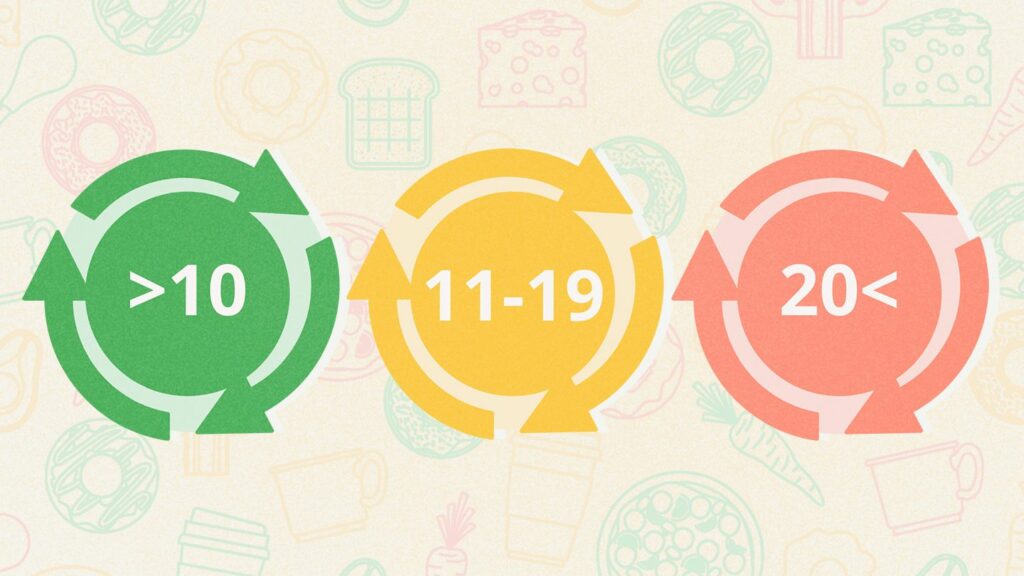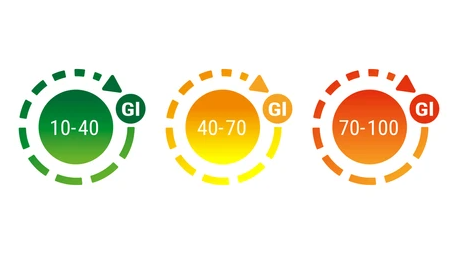Today, calculators make many things easier. No more hours of torture to check that the calculation is correct. Nowadays, we enter everything we need for the count into the calculator, getting the correct answer. If you care about your health and want to calculate the Glycemic Load very quickly, our calculator will help you with that. Learn about the definition, history, and how to calculate Glycemic Load.
Further, you can find more interesting topics on our site, such as Roofing Calculator. On the other hand if you want to calculate how much it costs you to get your house cleaned, use our House Cleaning Cost Calculator.
Glycemic Load – Definition
Glycemic load is an indicator that will help you predict how much your blood sugar will rise and how long it will stay at a high level.
Unlike the glycemic index, the glycemic load also depends on the number of carbohydrates (CHO) ingested. For example, if you eat one small apple, which weighs about 100 g, the glycemic load will be 4.2. However, if you eat a twice as big apple, weighing about 200 g, the glycemic load will be 8.4. Although the glycemic index of both apples is the same, i.e., 38.
This means that foods with a small glycemic index can cause a significant increase in blood glucose levels when consumed in large quantities. Food with a high glycemic index can cause a low load if they are low in CHO or ingested in small amounts. For example watermelon whose GI is 72, in 100 g contains about 95% water and only 7 g of CHO and has a glycemic load of 5, which is only slightly higher than the glycemic load of apples, which has twice the glycemic index – 38, but also 11 g of CHO hydrate in 100 g.
Monitoring blood glucose levels is important because of how glucose works in the body. It is especially important in people with diabetes.
To properly regulate glycemia, it is necessary to know the glycemic index and glycemic load for a particular food. The recommended daily value for glycemic load is about 100 and can range from low (60) to high (180).
Glycemic Load Formula
The formula for calculating Glycemic Load is as follows: GI is multiplied by the amount of CHO and then divided by 100.
GL = \frac {GI \times CHO}{100}Glycemic load proves that consuming food with a small GI but containing a lot of CHO for weight loss is ineffective. Therefore, your glycemic load can be controlled independently. You need to choose food with a small GI or reduce the flow of fast CHO.
Glycemic Index vs. Glycemic Load

Low GL: 10 or less
Medium GL: 11 to 19
High GL: 20 or higher
Look at the GI ranges, as a comparison:

Low GI: 55 or less
Medium GI: 56 to 69
High GI: 70 or higher
The glycemic index determines the increase in blood sugar. For example, CHO has the strongest effect on blood sugar, but also, not all carbohydrates are the same.
Each food has a sum of 100, and a low sum means that this food will not cause a sudden rise in blood glucose.
How much blood sugar will increase depends on the type of food we eat and the amount of food we eat. For example, we will eat more rice, pasta, or potatoes than kiwis during a meal.
Therefore, there is another measure we call glycemic load (GL).
The glycemic index is a measure of carbohydrate quality but not quantity. Namely, it stays the same regardless of whether you eat 10 or 1000 grams of that CHO. In other words, you can eat twice as many CHO from a food that has a GI of 50 compared to another food that contains CHO with a GI of 100, so your glucose levels will be the same.
People who eat food with a lower glycemic index have a lower risk of diabetes and insulin, heart disease, and various types of cancer.
Glycemic Load Chart
| Name | Carbohydrate content | Glycemic load | Caloric content |
| Baked potato | 11,5 | 10,92 | 107 |
| Cornflakes | 78,6 | 66,8 | 330 |
| White bread | 48,6 | 41,3 | 238 |
| Pumpkin | 4,4 | 3,3 | 21,4 |
| Coca-Cola | 42 | 29,4 | 10,6 |
| Grapes | 15,0 | 6,0 | 65 |
| Cooked beans | 21,5 | 9,0 | 123 |
Low Glycemic Load Foods – List
If one serving of food has a glycemic load of 10 or lower, it is considered low.
Low Glycemic Load Foods:
- Fruits and vegetables (except potatoes) and legumes (3/4 cup) have a small glycemic load
- Cereals: Quinoa, millet, and buckwheat
- Fruits: Apples, strawberries, and grapes
- Toast whole grain bread
- Avocado
- Tomato
- Smoked salmon
- Greek yogurt
- Chicken
- Eggs
- Fish
- Beef
The study included 24 adult women, 12 of whom have diabetes, and their data were compared with a control group of women with similar characteristics who do not suffer from this disease. The average GI of foods in both groups was 51.2 ± 3.04. The women with diabetes recorded a higher intake of high GI foods and a higher GL diet. No statistically significant difference was found between women with type 2 diabetes and the control group between GI and GL foods.
Glycemic Index Diet
One of the most famous diets for weight loss using the glycemic index is Michel Montignac, who devised a weight loss program inspired by his health and overweight. Over time, new insights have been gained, and one of the most important in this effective diet is distinguishing food’s glycemic index from its glycemic load.
Depending on the increase in blood glucose levels, the glycemic index ranks food and beverages on a scale from 0 to 100. Accordingly, foods and beverages have:
- High glycemic index if the value is higher than 70. Foods with a high glycemic index include white rice, white bread, honey, baked potatoes.
- Mean glycemic index, if the value is from 56 to 69. Examples of foods with a mean glycemic index include banana, raisins, muesli, couscous.
- Examples of foods with a small glycemic index include carrots, apples, lentils, peanuts.
GL considers both the GI and the amount of CHO in a typical portion of food.
Accordingly:
- Fruits and vegetables (except potatoes) and legumes (3/4 cup) have a small Glycemic load
- Medium GL has brown rice (1 cup) or, for example, wholemeal bread (1 slice)
- high GL has baked potatoes (1 medium size) or white rice (1 cup).
The basic premise of this approach is to limit the intake of food with a high glycemic index and glycemic load. Therefore, choose fruits, vegetables, and whole grains to optimize insulin secretion because they have small GI and GL.
You can also check our BAI Calculator to ensure that your body fat index is within the limits of healthy body fat.
Glycemic Load Calculator – How to calculate?
Glycemic load is based on the glycemic index (GI). It is calculated by multiplying the grams of available carbohydrates in the food by its glycemic index and dividing by 100.
GL = \frac {GI \times CHO}{100}GL – glycemic load;
GI – glycemic index; and
CHO – Carbs represent the number of carbohydrates in the portion.
Glycemic Load Calculator – Example
Now, using an example of this formula, you can compare GL donuts and watermelons:
GI donuts = 76, carbohydrate content = 38.8. GL = 29.5 g.
GI watermelon = 75, carbohydrate content = 6.8. GL = 6.6 g.
From this, we can conclude that after eating a donut, a person will get 4.5 times more glucose than after eating an identical amount of watermelon.
As an example, you can put fructose with a GI of 20. At first glance, it is small, but the carbohydrate content in fruit sugar is almost 100 g, and GL 20.
FAQ
What is glycemic load?
Glycemic load is an indicator that will help you predict how much your blood sugar will rise and how long it will stay at a high level.
How to calculate glycemic load?
Glycemic load is based on the glycemic index (GI). It is calculated by multiplying the grams of available carbohydrates in the food by its glycemic index and dividing by 100.
What should your glycemic load be daily?
When following the low GI diet, it’s recommended that you keep your daily GL under 100.
What is a normal glycemic load?
Low GL: 10 or less. Medium GL: 11 to 19. High GL: 20.
What is a good low glycemic breakfast?
• Oatmeal of rolled oats, milk, and chopped fresh fruit,
• Toast whole grain bread with avocado, tomato, and smoked salmon.
What is considered a high glycemic load?
High GL: 20 or higher.
What is the glycemic index of watermelon?
Watermelon, for example, has a high glycemic index (80). But a serving of watermelon has so little carbohydrate that its glycemic load is only 5.
